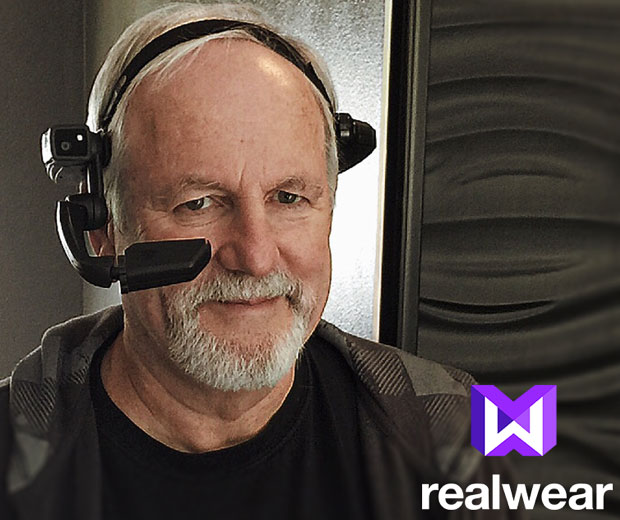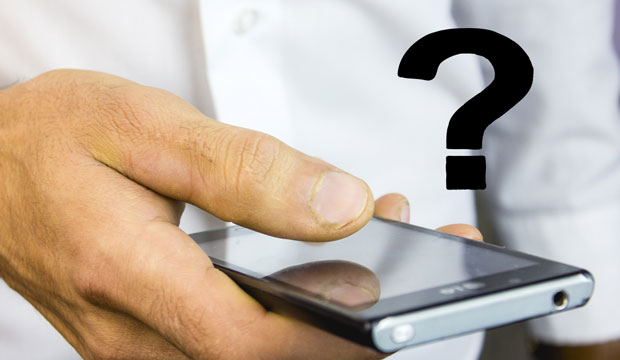It is easy to look back on technology changes and see that we had plenty of warnings that we clearly missed at the time. VCRs gave way to DVD players, which in turn have given way to streaming services. Brick cellphones evolved into flip phones, which were swapped out for two-way pager phones and then wiped out by the iPhone model. Tape players gave way to the Walkman CD player, which gave way to the iPod, which also ended up in the iPhone model.
Sometimes, trends that seem obvious fail to materialize. Laser disks never got to critical mass before DVDs arrived on the scene, and 3D TV, which seemed so obviously next, wasn’t.
I think we soon will see another big industry shift, but some key elements are missing, so I don’t want anyone to think that your smartphone will be obsolete this year. The change I’m calling may be closer to 2020 than 2017.
I’ll explain why smartphones are becoming obsolescent and end with my product of the week: the thing that I think is a big part of what is to come.
Smartphone Problems
A number of issues with how we use smartphones need to be addressed. First, the things literally can kill you. I’m not talking about their catching fire, though clearly that has been a big issue. I’m talking about the fact that people want to use these things while walking and driving. This practice often ends very badly.
One of the scariest things on the road right now is looking in your rear-view mirror when you’ve stopped at a light, and seeing the driver of the car coming up behind you looking at a phone. You just pray the driver looks up before a motor lands in your back.
We’ve made using the phones illegal. We’ve charged people whose phone use has caused deadly traffic accidents with manslaughter, and given them drunk driving-like jail terms and financial penalties. It is pretty clear that for folks who are attention span-challenged — or those driving, walking or bike riding on the same roads with them — that smartphones are still killers.
If we want to save lives, we need to rethink how device can be used more safely.
Technology Changes
Although smartphones have gotten bigger, display resolution and costs have dropped, so we actually could make displays smaller while still showcasing the same or more information. This is important, because it means that in theory, we could place them closer to the line of sight, allowing users to see both the display and what is coming.
Military pilots have expensive rigs like this so they can see targeting and instrument data while remaining focused on what their planes and helicopters physically have in front of them. These rigs give them additional viewing options in low light, short of putting on night vision goggles that typically have far more limited fields of view. In other words, head-mounted technology has massively advanced over the last decade.
Voice command certainly has come a long way. Many of us now have Amazon or Google home tech products that we can order around, and some of us have them connected to other smart home functions so we can order around other things in our house.
Following on this tech are natural language interfaces that can better understand us without learning commands, tied to deep learning cloud systems that let us interact with systems more conversationally when we have the bandwidth. We are getting very close to the point where we’ll simply be able to talk to our devices and have them not only follow our orders but converse with us, providing ever richer services and information without our having to type a single word.
This idea is tied to AI-based chatbots. We’ve already seen products like IBM’s Watson begin to cut a relatively impressive swath through the initial opportunity for ever richer voice-enabled cloud offerings.
Tied to deep learning systems, we could have the equivalent of autocomplete for complex decisions and tasks. For instance, you could simply ask for a letter to be written to a sibling and then provide an outline of the content, which could include pictures, videos and even interactive elements, mostly pulled from your cloud digital history and apps.
A four-page letter could take you 30 seconds to summarize, with the cloud system doing the rest. Now apply this to business proposals, correspondence, or even thank you notes. The output, based on an analysis of your other correspondence, would look like it came from you — but likely would have better sentence structure and punctuation, and no typos.
Putting It All Together
What I’m anticipating is a multilevel solution with a head-mounted fully functional smartphone-like device with a screen below one eye. It would deploy when needed, kind of like a more attractive version of what Boba Fett used in Star Wars but without the helmet.
It would be a fully functional computer, likely based on the smartphone hardware and OS to get developers, size and connectivity right. It would be connected to a set of services that would provide the chatbot AI, deep learning and data connectivity it would need, and it would have a significant fashion element so folks wouldn’t have a Google Glass moment when wearing it.
I expect it would have a camera, though, so it could gain context and provide capabilities like facial and object recognition, as well as warn you if you’re too focused on the screen and about to walk into danger. I expect an option here would be a low light or infrared camera, so it also could help you see in the dark.
Wrapping Up: All the Elements Exist
Virtually all of the core elements to create this thing exist, but they don’t exist in any one vendor. Those that have the client device capability generally don’t have the back-end services or hardware yet. However, nothing says they couldn’t partner to get there. Companies like Amazon, Microsoft, Lenovo and Alibaba have showcased resources in line with this kind of an offering, and people like Elon Musk, Jeff Bezos and Richard Branson have the vision and personal resources.
For me, the question isn’t if, it is when — and who will take the first risky step. Like every technology that proceeded it, the smartphone eventually will be replaced. I think it will be by a follow-on to my product of the week, tied to a service that slowly is being birthed in the cloud.
Early smartphones didn’t look like the iPhone, and I’m not suggesting the RealWear HMT-1 is the iPhone’s replacement. Still, even though its focus is more on industrial use than the consumer market, this product does have the core elements to make it a viable proof of concept.
It is a full Android tablet you wear on your head. It has noise cancellation microphones, and it can operate by voice command (and it could connect to systems that use a full natural voice interface). It has a small, high-resolution display that sits just out of your line of sight, and it has a camera (with light source) that it could use to identify and share with a service or person what you’re viewing.

I’ve worn it, and it is acceptably light, though its industrial focus does cause it to miss on being attractive and unobtrusive. (It is designed to attach to a helmet, making it far closer to what Boba Fett actually would use than what you’d likely buy.)
It’s estimated to cost around US$1,000, and even at low volume that is in line with high-end smartphone pricing. It should be far safer and cheaper than other head-mounted solutions potentially targeting smartphone replacement.
While the HMT-1 actually is targeted at industrial use, it could form the design basis for a product that eventually could replace the iPhone wave of smartphone offerings. It could be far safer — and with the anticipated services, far more useful — than what we have today. As a result, the RealWear HMT-1 is my product of the week.

























































Voice control is nice as a parlor trick or when you’re alone. Useless and very detracting otherwise. Imagine any group of people, on the bus, dining out, watching tv, in the library or office, etc., all yapping out loud to their devices and the devices yapping back.
Even noticed how people in the same room still text each other? It’s not that they don’t want to talk, they don’t want to be heard by those around them.
I stopped using google Now when it switched to voice as the primary input.
IIRC, Elon Musk is trying to leapfrog this voice control nonsense with mind control.